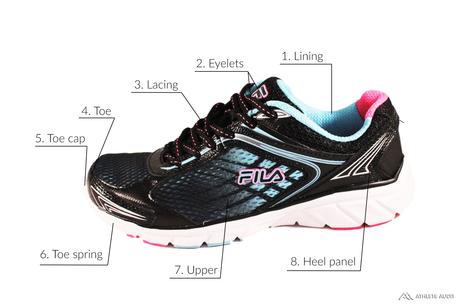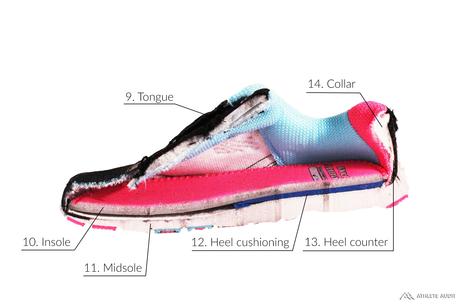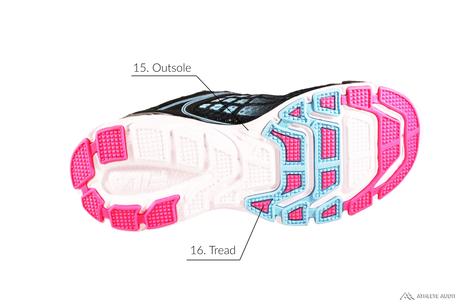Parts of a Cross Training Shoe



- Lining – A sock-like fabric in the inside of the shoe helps to add comfort
- Eyelets – Small holes toward the top of the upper keeps laces in place
- Lacing – Most cross trainers either use traditional laces or velcro for tightening
- Toe – The end of a shoe that is often reinforced for improved durability
- Toe cap – A patch of rubber at the very end of the toe improves durability and helps with dynamic movements
- Toe spring – The rise or upward curve in the forefoot that helps the foot roll forward
- Upper – Often made of lightweight, breathable materials such as mesh or synthetics
- Heel panel – The part of the shoe that covers the heel
- Tongue – Well padded and breathable for comfort
- Insole – A soft footbed helps to add comfort and support for your feet
- Midsole – Built similarly to a running shoe, the midsole will be thinner in the forefoot and thicker in the heel
- Heel cushioning – Some cross trainers will have additional heel cushioning for shock absorption
- Heel counter – A rigid, plastic insert behind the heel keeps the structural integrity of the heel
- Collar – A padded collar adds comfort and ankle support
- Outsole – The rubber used on the bottom of a shoe provides traction
- Tread – Compared to running shoes, cross training shoes will have flatter tread that works for a variety of sports

